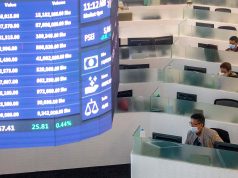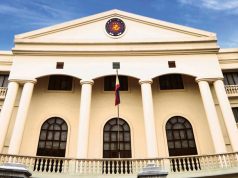Is rice tariffication working?
July to September of any year is when we have the lowest local supply of rice. In the past, the National Food Authority (NFA) would have been ready with at least 30 days-worth of rice stock by July 1, most of which would be imported. The remaining 60 days of rice stock to be consumed by the population were expectedly held by households and the private commercial sector. That had been how we managed the seasonality of rice production to ensure our access to our food staple.
This year is special since this government did what several governments in the past did not dare do: liberalized rice imports and exports.
To recall, Congress passed the Rice Tariffication Law (RA 11203) in the last few days of 2018, and President Duterte signed it into law on Feb. 14, 2019. Among other provisions, it ended the import monopoly of the NFA and allowed the private sector to import rice at quantities they want subject to a 35% tariff on rice if imported from the rest of the ASEAN. Since about half of world’s rice exports come from Southeast Asia, it is likely that the Philippines would continue to source most of its rice imports from the ASEAN.
The timing of the law was precarious. In about two quarters after its enactment, the country would have gone through its leanest quarter in rice supply. Its implementing rules and regulations came out in March, relatively fast, but still it put to question whether, given that the NFA was no longer allowed to import rice, the country’s private sector would have enough time to import enough rice and avert a shortage.
If the response of the private sector was slow, there would not be enough imported rice for the country to reach the 90-day rice stock needed at the start of July. With inadequate stocks, the country would go through another round of rice price inflation, as in 2018.
So how did the country fare so far under the rice tariffication law? Has the private sector imported adequate quantities of rice? Can we avert another bout of rice price inflation this year?
Finance Secretary Carlos Dominguez III answered that for us: yes, rice tariffication is working. Rice prices declined because total rice supply is adequate as the private sector imported 1.4 million metric tons in the first four months of the year, and is still importing. The projected quantity of rice imports this year could reach about 2.5 million metric tons.
RICE STOCKS AND PRICES
The level of stocks relative to use is an important determinant of rice prices. In any year, the demand for rice in the country is made up of the use of rice as food, seeds, feeds and waste, inputs for processing, exports, and ending year rice stocks. Rice supply on the other hand is comprised of beginning year rice stocks, local output, and imported rice.
Rice use or demand is somewhat more predictable than supply. Food use is, on average from 2000 to 2015, about 72.5% of the total. From time to time, the ratio varies but not by much. Food use of rice is a relatively stable quantity. And that goes as well for our use of rice for seeds, feeds and waste, and processing, which is about 9.3% of total use. The remaining 17.5% is the end of year rice stocks.
Rice supply is the more volatile side. Of total supply, local rice output is about 73.6%, while imported rice comprises about 8.8%. Start of year rice stocks, 17.6% of total supply, simply mirrors the level of the ending year rice socks in the preceding year.
Rice supply is more unstable than demand because of output fluctuations and the volatility of the quantity of imported rice. Outputs go up and down depending on the weather and natural calamities including pest incidence. Extreme weather situations, such as what we are going through now with the El Niño dry spell, and pest problems reduce harvests.
Import volatility contributes more to supply instability than the former. The problem reflects the variations of policy decisions on whether the country should import rice, and if so, when and how much should we import. That volatility is linked to the country having had only one importer of rice, the NFA. In 2018, the NFA was late in importing rice, depleting the rice stock, and rice prices spiked.
The country faces a risk that imported rice will not be enough to ensure adequate stocks as the country goes through the lean quarter in the year, causing stocks-to-use (STU) ratio to fall.
From 2000 to 2017, stocks-to-use (STU) ratios as reported by the Philippine Statistics Authority (PSA) are good predictors of rice prices, as the chart here depicts. In the period just before the rice crisis in 2008, the country’s STU ratio was at its lowest level, discounting 2013. The price went up in 2008 by about 27% from its level in 2007. The price spike just about plateaued from 2009 to 2012, with the recovery of the STU ratio to its long-term average of 18%.
However, in 2013 the ratio fell once again to its lowest level, reflecting the actions of former Agriculture Secretary Proceso Alcala to keep rice imports down to show he succeeded in attaining rice self-sufficiency in 2013. He did not, but he succeeded in bringing down the STU ratio to about 14%, and the price went up by 15% in 2014.
The STU ratio recovered in 2014 to 2015, which may be traced to former President Benigno Aquino’s taking food security and the NFA away from Secretary Alcala and appointing former Senator Francis Pangilinan as Presidential Adviser for Food Security.
In 2017, the STU ratio fell once again to a low of 14% and rice prices went up. At the time, Cabinet Secretary Leoncio Evasco, Jr. chaired the NFA Council, having been appointed by President Duterte. However, problems resurfaced. He and the other NFA Council disagreed with the NFA Administrator on the timing and manner of rice imports, delaying rice imports, pulling down the STU ratio and pushing rice prices up.
That was repeated in 2018. And we all know what transpired then.
The PSA does not have an estimate yet of the STU ratio for 2018 and 2019. I attempt to estimate that in order to see how comfortable we should be in 2019.
The ratios for 2018 and 2019 were projected based on the following actual and projected data.
• The output and import statistics in 2018 for rice were obtained from other publications of PSA. In assembling the data for 2019, the rice output and food and non-food uses (other than ending stocks) of rice is maintained for 2019.
• I had obtained a copy of the rice import data in the first few months of 2019 from the Department of Finance. It indicates that in roughly the first five months of the year, rice imports reached 1.7 million metric tons — an expansion by 243.9% over the same period in 2018. Apparently the NFA was still able to import rice, and this must be orders made by the NFA last year which just came in the first quarter of 2019. Sixty-five percent of the volume was brought in by the private sector, indicating a good response by the sector to the new policy regime. In fact, some forecasters placed the projected imports of the country in 2019 to reach 2.4 million tons.
Based on the projected data for 2018 and 2019, the STU ratio in 2018 might have plunged to 12.98%, which is 8% lower than its level in 2017. The low estimate may explain why rice prices went up sharply in that year.
In 2019, the STU ratio is estimated to climb up to 16.05%, which approaches its average level of 18%. The country is thus moving towards a stable rice price regime.
Apparently due to the recovery of the STU ratio, monthly prices of well milled rice have been falling. At their peak in September 2018, the average monthly price of well milled rice was P44.17 a kilogram. By April 2019, PSA reported the monthly rice price at P34.76.
It would seem therefore that this part of the rice tariffication law on food security seems working. Indeed, the revenues from rice imports is approaching P6 billion in the first five months. The government may well collect more than P10 billion in tariff revenues from rice imports this year, which the government could use for the rice competitiveness enhancement fund to modernize our agricultural sector.
Ramon L. Clarete is a professor at the University of the Philippines School of Economics.




